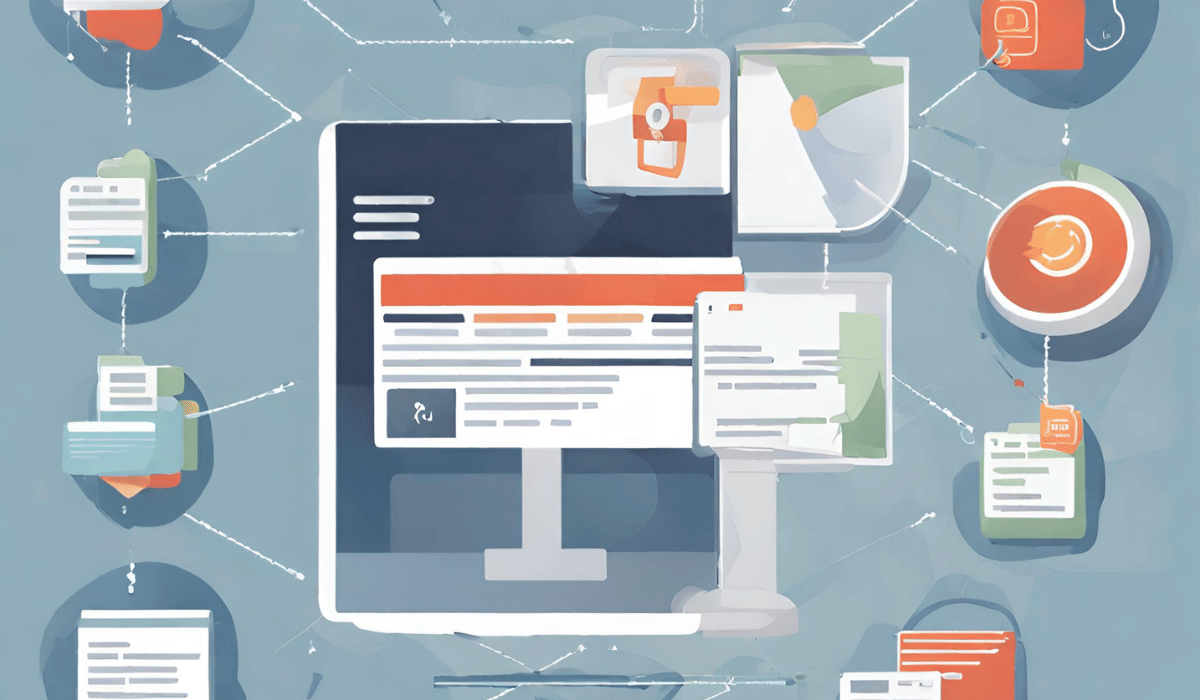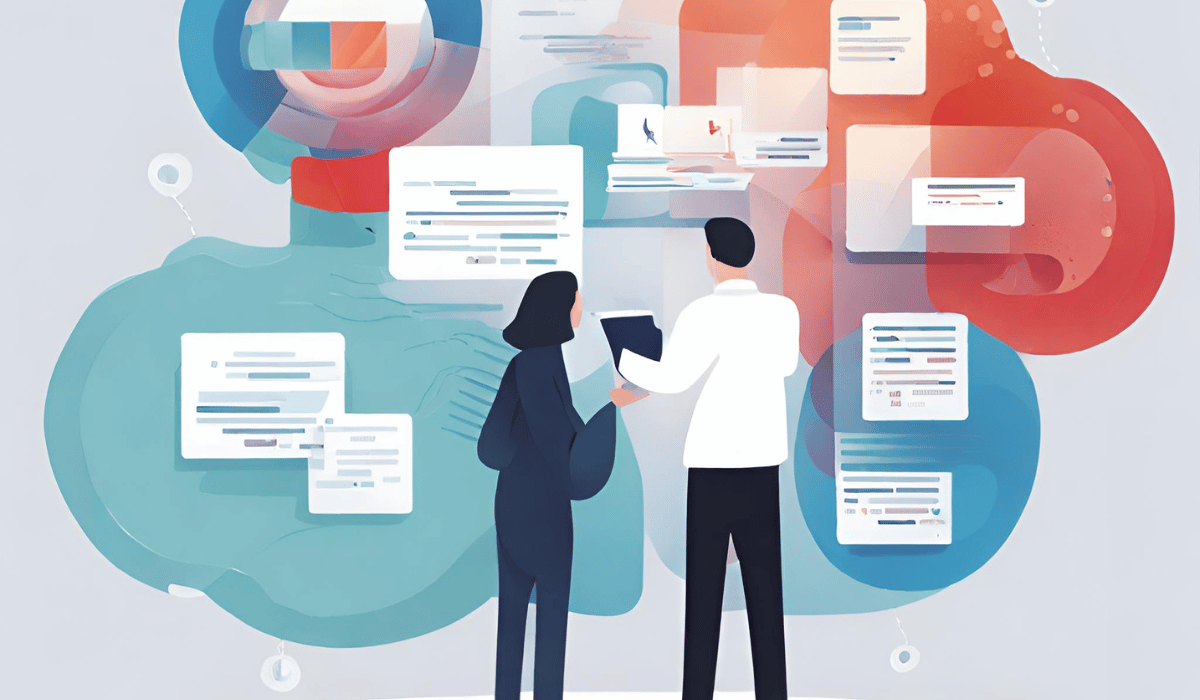Introduction
In today’s digital age, information security has become a top priority for organizations of all sizes. With the increasing number of cyber-attacks and data breaches, businesses must implement effective security measures to protect their sensitive information. One such measure is normalization, which involves organizing and standardizing data to ensure consistency and accuracy. In this article, we will explore the benefits of normalization in information security and provide best practices for its implementation.
Benefits Of Normalization In Information Security

Following are the benefits of normalization in information security:
1. Improved Data Quality: Normalization helps to eliminate duplicate or inconsistent data, ensuring that the information is accurate and up-to-date. This reduces the risk of errors and improves the overall quality of the data.
2. Enhanced Security: Normalization ensures that sensitive information is stored in a standardized format, making it easier to secure and protect. This reduces the risk of data breaches and unauthorized access.
3. Increased Efficiency: Normalization allows for faster and more efficient data retrieval and analysis, as the information is organized logically and consistently. This can save time and resources for businesses, allowing them to focus on other important tasks.
Best Practices For Normalization In Information Security
1. Identify Key Data Elements: Before implementing normalization, it is important to identify the most important data elements that need to be organized and stored in a database. This will help determine the appropriate level of normalization needed for the specific data set.
2. Follow Standard Normalization Forms: There are several standard normalization forms, such as the first normal form (1NF), second normal form (2NF), and third normal form (3NF). It is important to follow these forms to ensure the data is properly organized and eliminate data redundancy.
3. Consider Performance Impacts: While normalization can improve efficiency, it can also impact performance if not implemented properly. It is important to consider the performance impacts of normalization and make adjustments as needed.
4. Implement Access Controls: Normalization alone cannot ensure information security. It is important to implement access controls to limit who can access and modify the data in the database.
5. Regularly Review and Update: As data changes over time, it is important to regularly review and update the normalization process to ensure it is still effective and efficient.
The Fundamentals Of Data Normalization

Data normalization is a process used to organize data in a database in a way that reduces redundancy and improves data integrity. There are several fundamentals to data normalization, including identifying and eliminating redundant data, creating separate tables for related data, and establishing relationships between tables. Another important aspect of data normalization is choosing the appropriate level of normalization. There are several levels of normalization, ranging from the first normal form (1NF) to the fifth normal form (5NF), with each level building on the previous one.
It is also important to consider the performance impacts of normalization and make adjustments as needed. This can include denormalization, which involves reintroducing redundant data for performance reasons.
In addition to normalization, it is important to implement access controls to limit who can access and modify the data in the database. Regularly reviewing and updating the normalization process is also crucial to ensure it remains effective and efficient as data changes over time.
What Are Some Of The Information Security Benefits Of Data Normalization?
Data normalization can provide several information security benefits, such as:
1. Reducing data redundancy: By eliminating redundant data, the risk of inconsistent or conflicting information is reduced, which can help ensure the accuracy and integrity of the data.
2. Improved data consistency: Normalization can help ensure that data is consistent across the database, which can help prevent errors and improve the overall quality of the data.
3. Better access control: Normalization can make it easier to implement access controls to limit who can access and modify the data in the database.
4. Improved database performance: Normalization can help improve database performance by reducing the amount of data that needs to be stored and queried, which can lead to faster response times and better overall performance.
Overall, data normalization is an important aspect of information security as it helps ensure the accuracy, consistency, and security of the data in a database.
Case Studies: Data Normalization In Action
Here are a few case studies that demonstrate the benefits of data normalization:
1. A healthcare organization was struggling to manage patient data across multiple departments and systems. By implementing a normalized database structure, they were able to streamline data entry, reduce errors, and improve patient outcomes.
2. An e-commerce company was experiencing slow load times and poor search functionality due to a large and complex product database. By normalizing the database and optimizing queries, they were able to improve site speed and customer satisfaction.
3. A financial institution was at risk of data breaches due to inconsistent data storage practices. By normalizing their database and implementing strict access controls, they were able to improve security and protect sensitive financial information.
In each of these cases, data normalization played a key role in improving data management, performance, and security.
Challenges And Risks Of Data Normalization In Information Security
Data normalization can provide significant benefits in terms of data management, performance, and security. However, it also comes with certain challenges and risks. Here are some of the key considerations to keep in mind:
1. Complexity: Normalizing data can be a complex process, especially for large databases. It may require significant time and resources to properly design and implement a normalized database.
2. Performance: While normalization can improve performance in some cases, it can also lead to slower query times if not implemented correctly. This is because normalized databases often require more complex queries to retrieve data.
3. Data integrity: Normalization can help ensure data integrity by reducing the risk of duplicate or inconsistent data. However, it can also make it more difficult to update or delete data, which can lead to errors or data inconsistencies if not managed properly.
4. Security: Normalization can improve security by allowing for more granular access controls and reducing the risk of data breaches. However, it can also make it more difficult to manage security permissions, especially in large databases with many tables.
Overall, data normalization can be a powerful tool for improving data management, performance, and security. However, it is important to carefully consider the challenges and risks involved and to implement best practices to ensure
Data Normalization Tools And Technologies For Information Security
Data normalization is an important technique for improving data management, performance, and security. Some several tools and technologies can be used to achieve data normalization in information security, including:
1. Relational database management systems (RDBMS): RDBMS is a popular choice for implementing data normalization in information security. They provide a structured way to store and manage data and support normalization techniques such as creating separate tables for each distinct data type.
2. Data modeling tools: Data modeling tools can be used to create a visual representation of the data structure and relationships in a database. This can help identify areas where data normalization can be applied.
3. Data cleansing tools: Data cleansing tools can be used to identify and remove duplicate or inconsistent data, which is a key step in the normalization process.
4. Data integration tools: Data integration tools can be used to combine data from multiple sources into a single, normalized database.
When implementing data normalization in information security, it is important to follow best practices to ensure the security of the data.
Implementation Of Strategies For Data Normalization In Information Security
Some key strategies include:
1. Limiting access to sensitive data: Access to sensitive data should be restricted to authorized users only, and access should be granted on a need-to-know basis.
2. Encryption: Sensitive data should be encrypted both in transit and at rest to prevent unauthorized access.
3. Regular backups: Regular backups of the data should be taken to ensure that data can be recovered in case of a disaster or data loss.
4. Monitoring and auditing: Regular monitoring and auditing of the data should be done to detect any unauthorized access or changes to the data.
5. Regular updates and patches: Regular updates and patches should be applied to the data integration tools to ensure that they are secure and free from vulnerabilities.
6. Testing: Regular testing of the data integration process should be done to identify any weaknesses or vulnerabilities in the process.
By following these best practices, organizations can ensure that their data is securely integrated and normalized, reducing the risk of data breaches and other security incidents.
The Future Of Data Normalization In Information Security

As data continues to grow and become more complex, the importance of data normalization in information security will only increase. With the rise of big data and the Internet of Things (IoT), organizations must be vigilant in ensuring that their data is properly integrated and secured. Additionally, emerging technologies such as blockchain and artificial intelligence (AI) will require new approaches to data normalization and security. As such, organizations need to stay informed and adapt to these changes to protect their sensitive information.
Conclusion
Information security is a critical aspect of any organization’s operations. With the increasing threat of cyber attacks and the evolution of technology, organizations need to prioritize the protection of their data. By implementing strong security measures and staying up-to-date with the latest developments in the field, organizations can safeguard their sensitive information and maintain the trust of their clients and stakeholders.
Frequently Asked Questions (FAQs)
What Is The Difference Between Data Normalization And Data Standardization?
Data normalization and data standardization are two different concepts in data management. Data normalization is the process of organizing data in a database so that it is consistent and free from redundancy. This involves breaking down large tables into smaller ones and creating relationships between them. On the other hand, data standardization involves establishing a set of rules or guidelines for how data should be formatted, structured, and labeled. This ensures that data is consistent across different systems and can be easily shared and analyzed.
What Are The Common Challenges Of Data Normalization In Information Security?
There are several common challenges to data normalization in information security. One of the main challenges is ensuring that all data is properly classified and labeled according to its level of sensitivity. This can be difficult because different types of data may require different levels of protection, and it can be challenging to determine the appropriate level of protection for each type of data. Another challenge of data normalization in information security is dealing with legacy systems and applications that may not be compatible with modern data normalization techniques. This can make it difficult to ensure that all data is consistently normalized across the entire organization. In such cases, it may be necessary to develop custom solutions or workarounds to ensure that legacy systems can still comply with modern data normalization standards. Additionally, data normalization in information security requires ongoing monitoring and maintenance to ensure that data remains properly classified and labeled over time. This may involve regular audits and assessments to identify any potential gaps or vulnerabilities in the data normalization process, as well as implementing new security measures as needed to address any identified risks.
Can Data Normalization Help Prevent Data Breaches?
Yes, data normalization can help prevent data breaches by ensuring that sensitive information is properly classified and labeled, making it easier to identify and protect. By implementing a consistent and standardized approach to data normalization, organizations can better control access to sensitive data, monitor its usage, and detect any unauthorized access or attempts to manipulate the data. This can help prevent data breaches and protect against other security threats, such as insider attacks or cyberattacks. However, it is important to note that data normalization alone is not enough to ensure complete data security. It should be used in conjunction with other security measures, such as encryption, access controls, and regular security audits. Additionally, organizations should ensure that their employees are trained in proper data handling procedures and that they are aware of the potential risks associated with mishandling sensitive data. By taking a holistic approach to data security, organizations can better protect their sensitive information and maintain the trust of their customers and stakeholders.
How Often Should Data Normalization Be Performed?
The frequency of data normalization depends on the specific needs and requirements of the organization. In general, data normalization should be performed whenever there are changes or updates to the data structure or when new data is added to the system. It is also recommended to perform data normalization periodically as part of routine data maintenance and quality control procedures. The exact frequency may vary depending on the size and complexity of the data set, as well as the resources available for data management. Ultimately, the goal of data normalization is to ensure that the data is consistent, accurate, and easily accessible for analysis and reporting purposes. By following best practices for data normalization, organizations can improve data quality, reduce errors and inconsistencies, and make more informed decisions based on reliable data.
What Are The Potential Risks Of Over-Normalization?
Over-normalization can lead to several potential risks, including:
1. Increased complexity: Over-normalization can make the data model overly complex, making it difficult to understand and maintain.
2. Performance issues: Normalization can increase the number of tables and joins required to access data, which can negatively impact performance.
3. Data redundancy: Over-normalization can result in data being split into too many tables, leading to redundant data and wasted storage space.
4. Difficulty in querying data: Over-normalized data can make it more difficult to query data, as it may require multiple joins across many tables to retrieve the desired information.
5. Inconsistencies in data: Normalization can lead to the splitting of data across multiple tables, which can make it more difficult to ensure consistency and accuracy in the data.
6. Increased development time: Over-normalization can require more time and effort to design and implement the data model, as well as to create and maintain the necessary relationships between tables.
